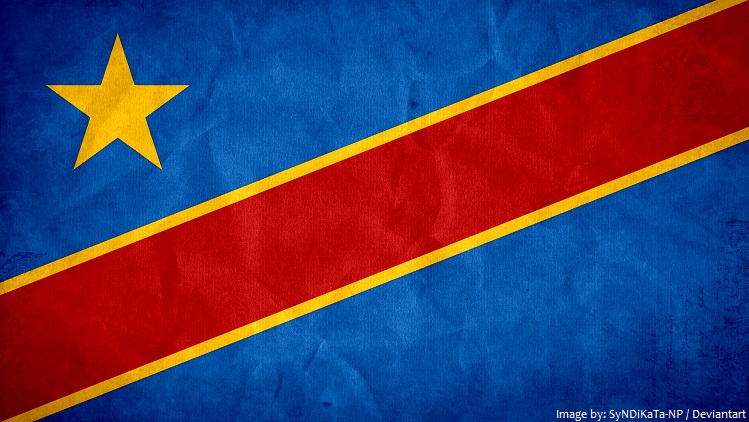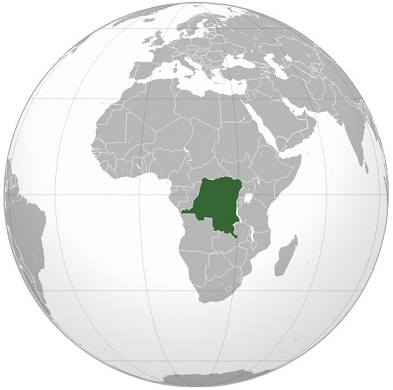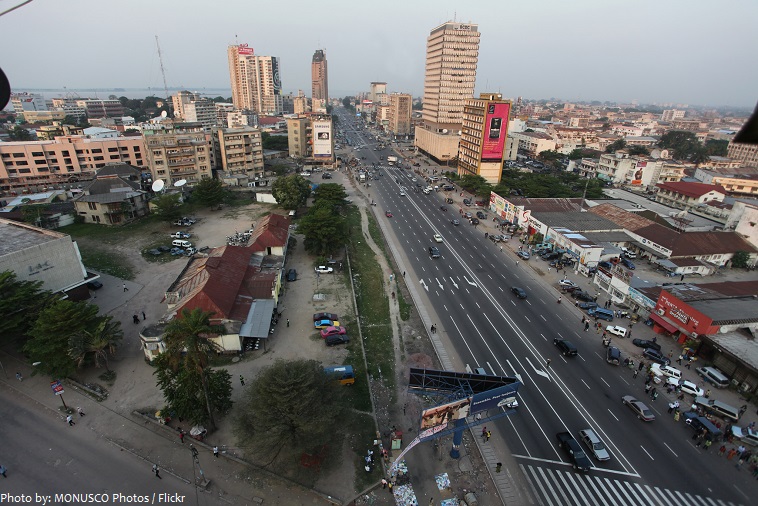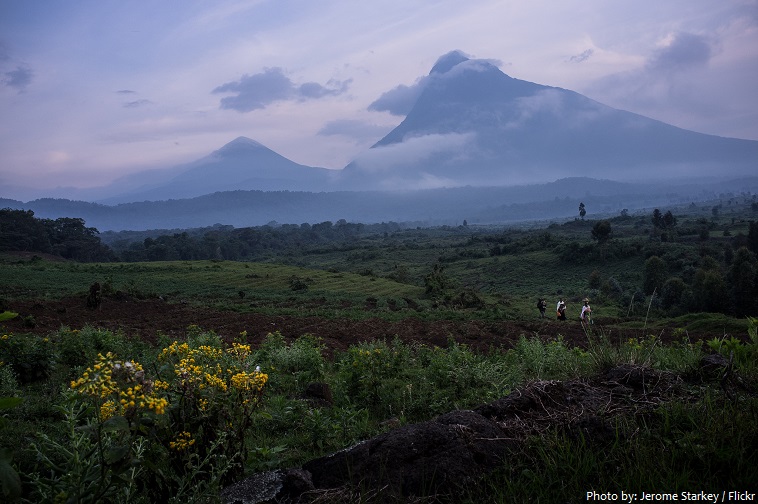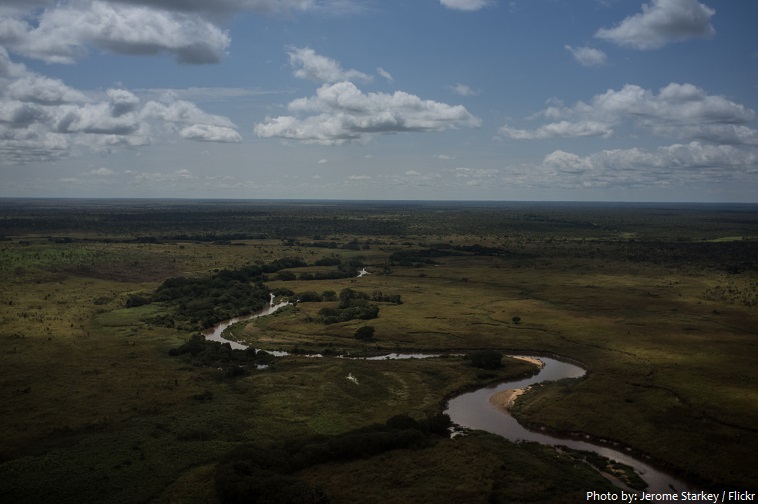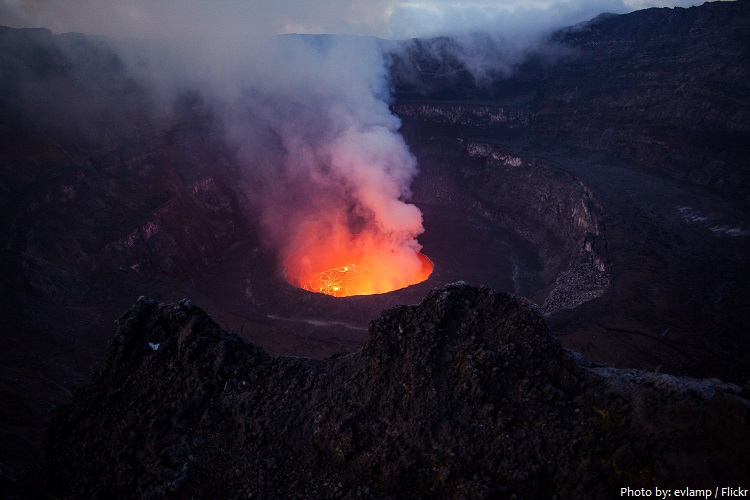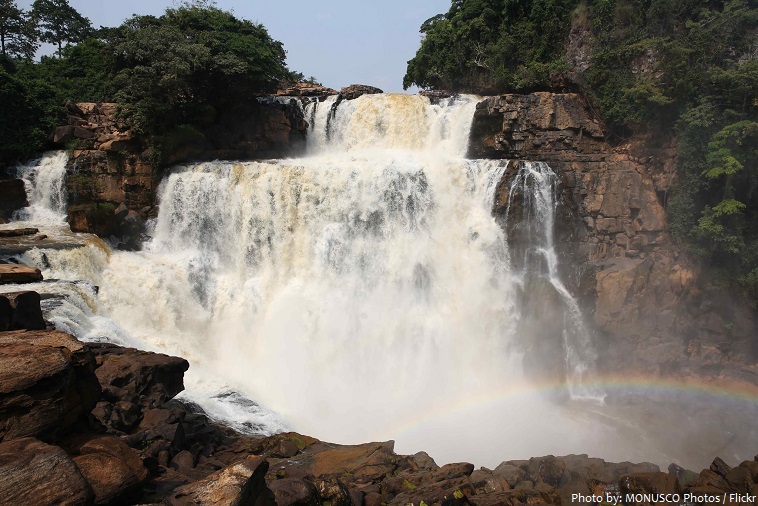The Democratic Republic of the Congo also known as DR Congo, DRC, DROC, Congo-Kinshasa or simply the Congo is a country located in Central Africa.
The official name of the country is the Democratic Republic of the Congo.
The official language is French.
It is bordered by the Central African Republic and South Sudan to the north; Uganda, Rwanda, Burundi and Tanzania to the east; Zambia and Angola to the south; the Republic of the Congo to the west and the Atlantic Ocean to the southwest.
With an area of 2,345,409 square kilometers (905,567 square miles), the Democratic Republic of the Congo is the eleventh-largest country in the world, and the second largest in Africa (after Algeria).
As of 1 January 2017, the population of Democratic Republic of the Congo was estimated to be 80,961,908 people. It is the fourth most-populated nation in Africa and the eighteenth most populated country in the world.
Kinshasa is the capital and the largest city of the Democratic Republic of the Congo. It is on the Congo River. It faces Brazzaville, the capital of the neighbouring Republic of the Congo, which can be seen in the distance across the wide Congo River, making them the two closest capital cities on Earth after Rome and the Vatican City.
The terrain of the country consists of vast central plateau covered by tropical rainforest, surrounded by mountains in the west, plains and savanna in the south/southwest, and grasslands in the north. The high mountains of the Ruwenzori Range on the eastern borders.
The country has a tiny coast on the Atlantic Ocean (37 km / 23 mi), just enough to accommodate the mouth of the Congo River.
Mount Stanley is a mountain located in the Rwenzori range. With an elevation of 5,109 m (16,763 ft), it is the highest mountain of both the Democratic Republic of the Congo and Uganda, and the third highest in Africa, after Kilimanjaro (5,895 m) and Mount Kenya (5,199 m).
The rainforests of the Democratic Republic of the Congo contain great biodiversity, including many rare and endemic species, such as the common chimpanzee and the bonobo, the African forest elephant, the mountain gorilla, the okapi and the white rhino.
The network of protected areas in the DRC covers about 11% of the national territory (260,000 square kilometers / 100,000 square miles). It is made up of seven national parks, plus nature reserves, game reserves and other types of protected areas.
The Virunga National Park is one of the most biologically diverse areas on the planet and home to the world’s critically endangered mountain gorillas. It covers an area of 7,800 square kilometres (3,000 sq mi). The park was established in 1925 as Africa’s first national park and is a UNESCO-designated World Heritage Site since 1979.
Garamba National Park was established in 1938. One of Africa’s oldest National parks, it was designated a UNESCO World Heritage Site in 1980. Garamba is (or at least was) the home to the world’s last known wild population of Northern White Rhinoceros. The park is also well known for its African elephant domestication programme started in the 1960s, which managed to train tourist-rideable animals.
Lola Ya Bonobo is a sanctuary for orphaned bonobos and one of the most popular tourist attractions in the DRC. Founded by Claudine Andre in 1994, Lola ya Bonobo is the world’s only sanctuary for orphaned bonobos. Since 2002, the sanctuary has been located at the Petites Chutes de la Lukaya, just outside of KinshasaThe bonobos are hunted for bush meat, and when a mother is killed, the babies are often taken and sold on the black market as pets. The sanctuary tries to recover as many as possible so that they can live out their lives in safety.
Perhaps DRC’s most magnificent single sight, active volcano Nyiragongo soars above the city of Goma and the surrounding Virunga National Park and sends plumes of smoke into the sky, before becoming a flaming beacon visible for miles around after sundown. With an elevation of 3,470 meters (11,380 ft) Nyiragongo holds one of the world’s largest lava lakes.
Located in Bas-Congo (about 130 km / 80 mi from the city of Kinshasa), the Zongo Falls represent Mother Earth at her best. The gorgeous Zongo Falls gush out of a 65 meters (213 feet) tall cliff and crash down through the jungle canopy, creating fabulous clouds and spectacular rainbows.
The Democratic Republic of the Congo is named for the Congo River, which flows through the entire country. The Congo River is the second longest river in Africa after Nile and the second largest river in the world by discharge volume of water (after the Amazon), and the world’s deepest river with measured depths in excess of 220 m (720 ft).
The area now known as the DRC was populated as early as 90,000 years ago, as shown by the 1988 discovery of the Semliki harpoon at Katanda, one of the oldest barbed harpoons ever found, believed to have been used to catch giant river catfish.
Bantu peoples began migrating into the region in the 5th century and again in the 10th century.
The Kingdom of Kongo remained present in the region between the 14th and the early 19th centuries.
Belgian colonization began when King Leopold II founded the Congo Free State, a corporate state run solely by King Leopold. Reports of widespread murder and torture in the rubber plantations led the Belgian government to seize the Congo from Leopold II and establish the Belgian Congo.
The Belgian Congo achieved independence on 30 June 1960 under the name Republic of the Congo (Léopoldville).
The recent history of the Democratic Republic of Congo has been one of civil war and corruption.
The Democratic Republic of Congo is extremely rich in natural resources but has had political instability, a lack of infrastructure, issues with corruption and centuries of both commercial and colonial extraction and exploitation with little holistic development.
The DRC is the world’s largest producer of cobalt ore, and the world’s second largest producer of diamonds.
The people of the DRC represent over 200 ethnic groups, with nearly 250 languages and dialects spoken throughout the country.
Christianity is the majority religion in the DRC, followed by about 95% of the population.
The DRC is the most populated officially French-speaking country.
The size of Congo, is slightly greater than the combined areas of Spain, France, Germany, Sweden, and Norway.
The DRC lies on the Equator, with one-third of the country to the north and two-thirds to the south. As a result of its equatorial location, the DRC experiences high precipitation and has the highest frequency of thunderstorms in the world.
